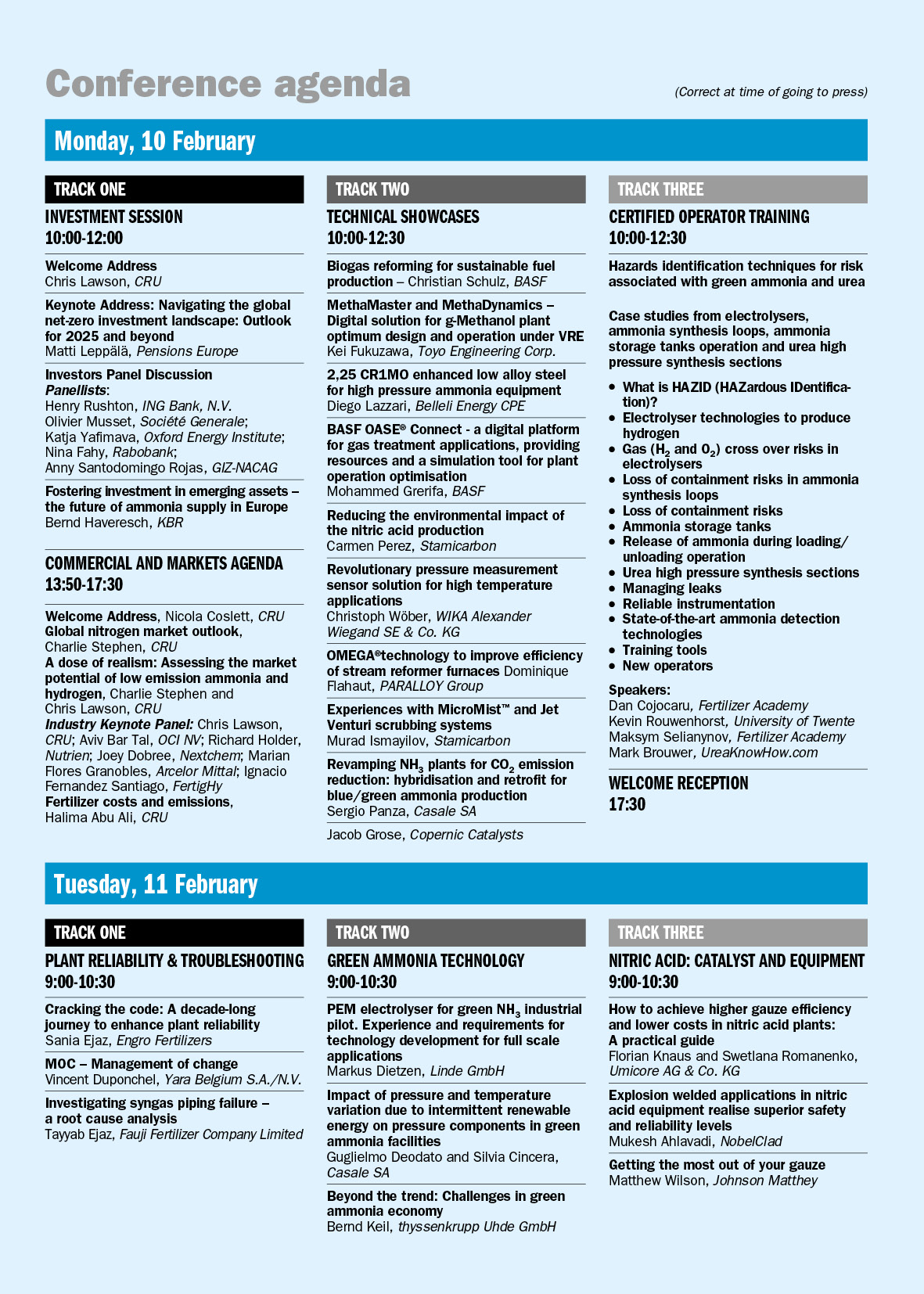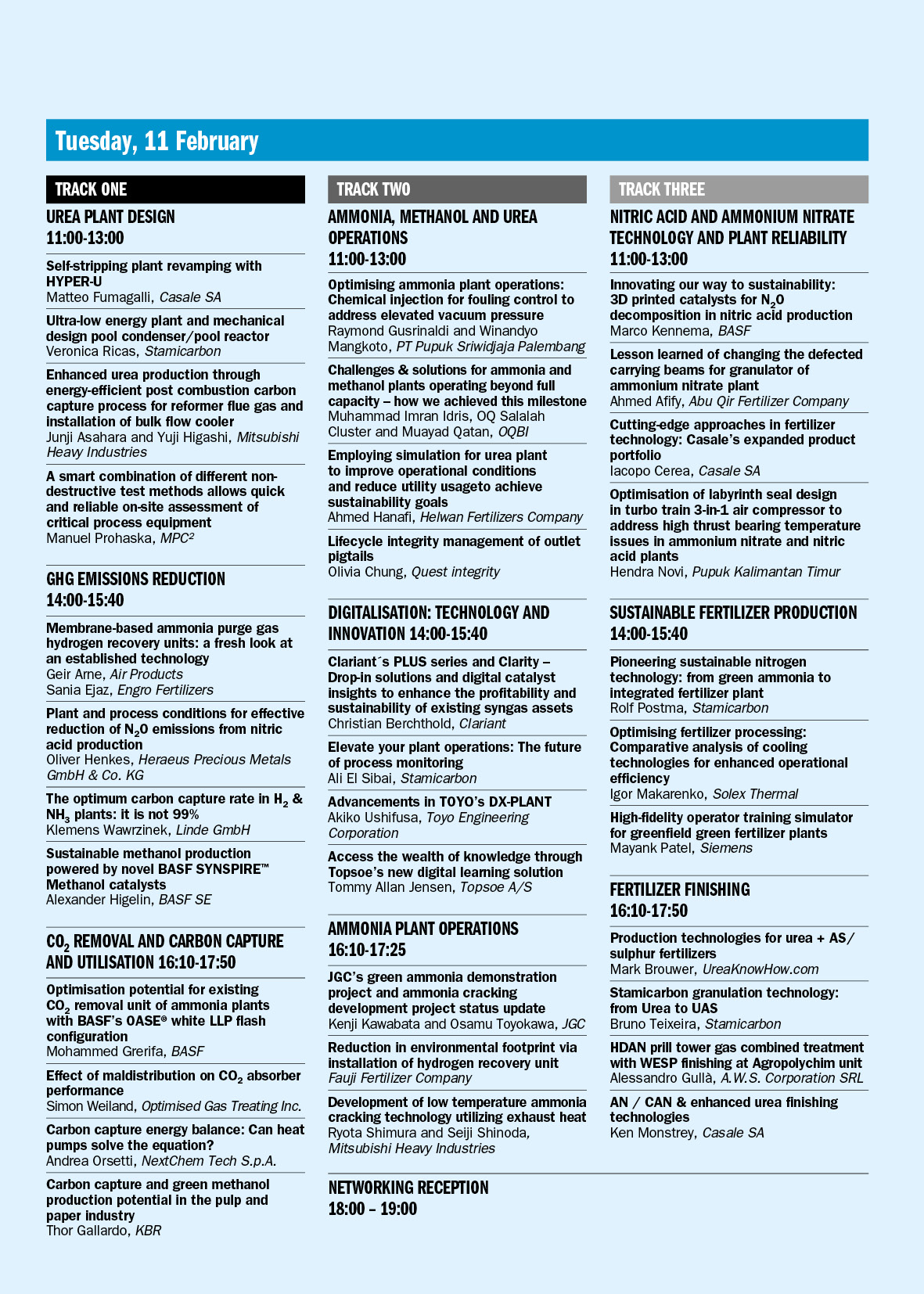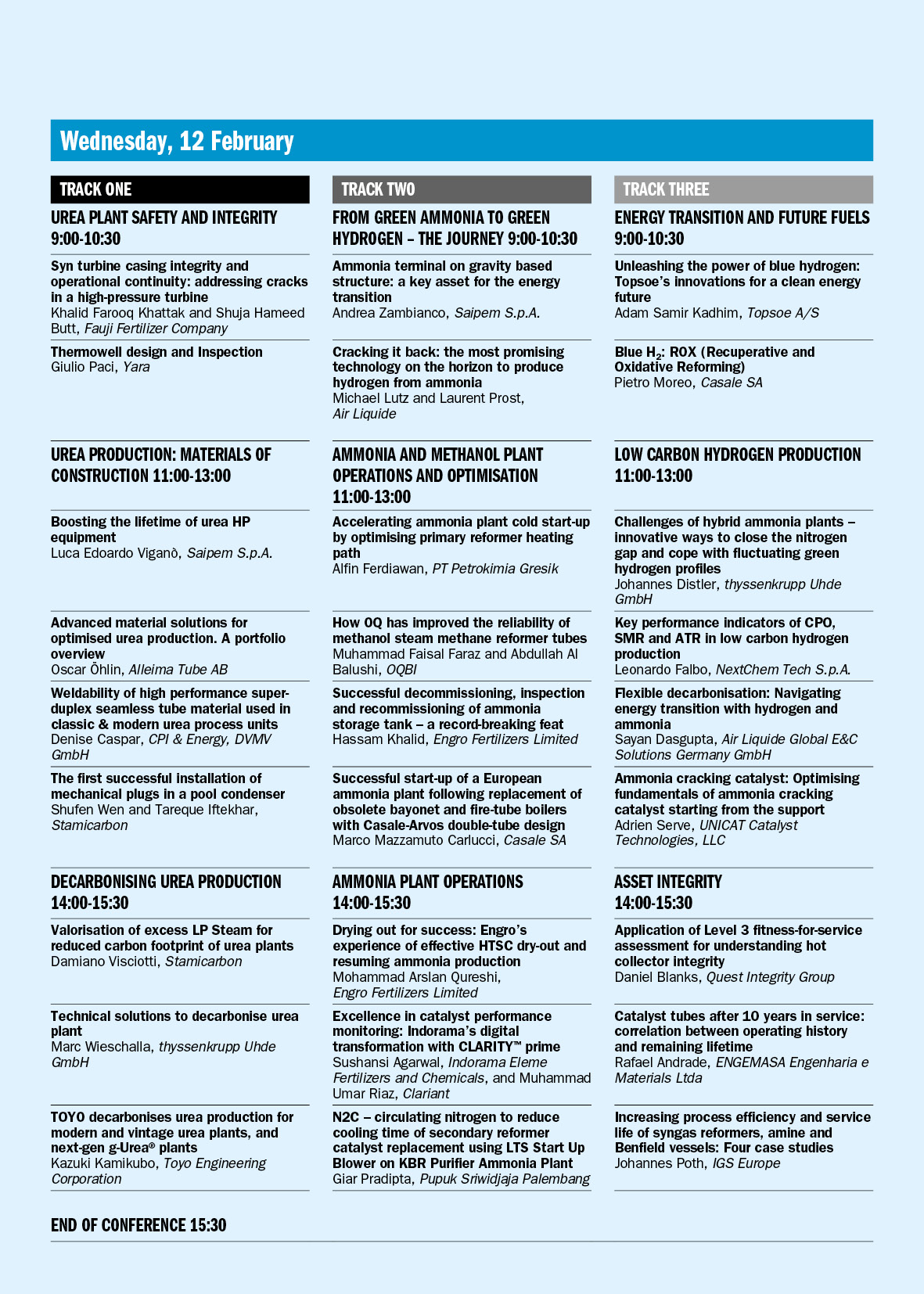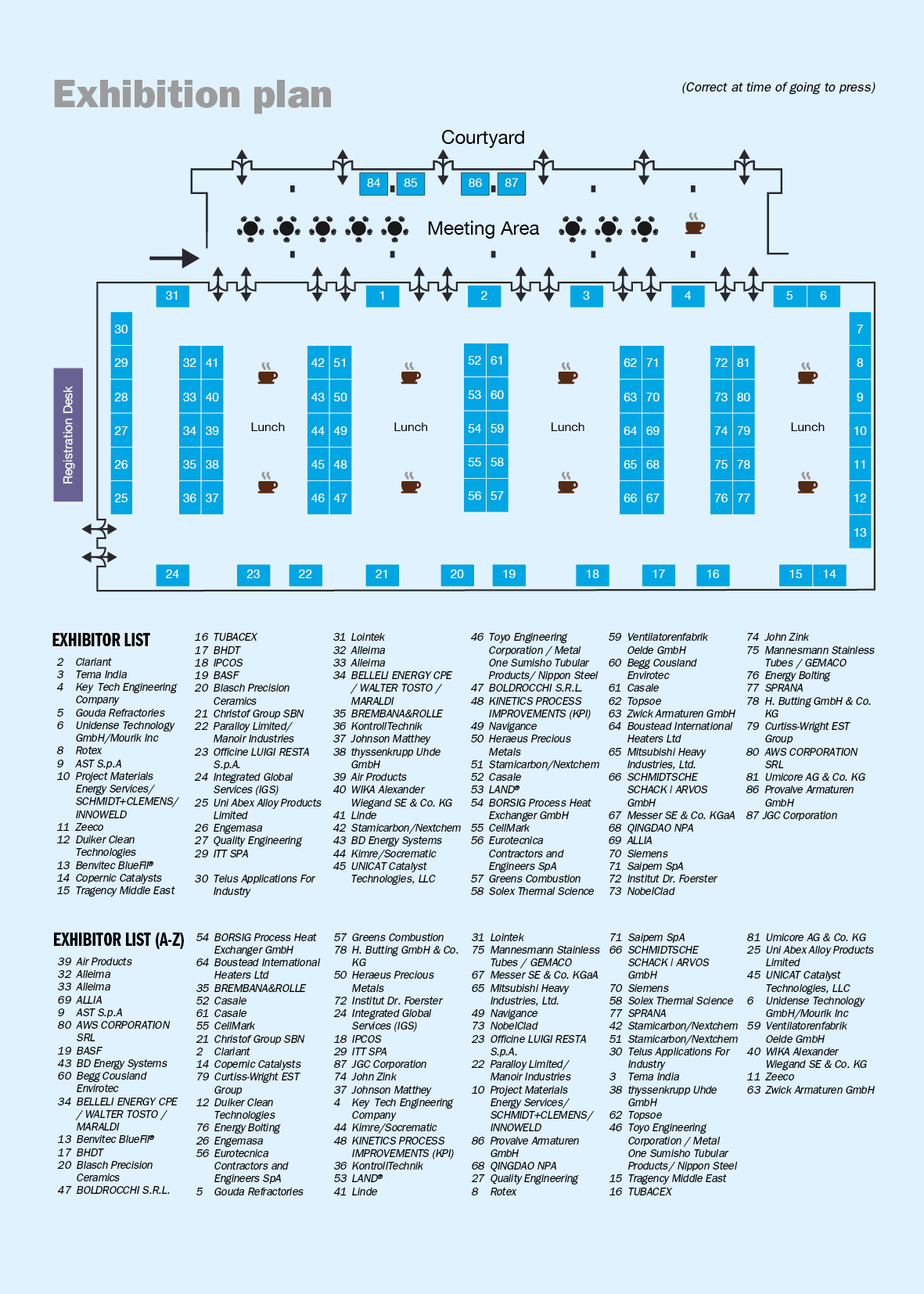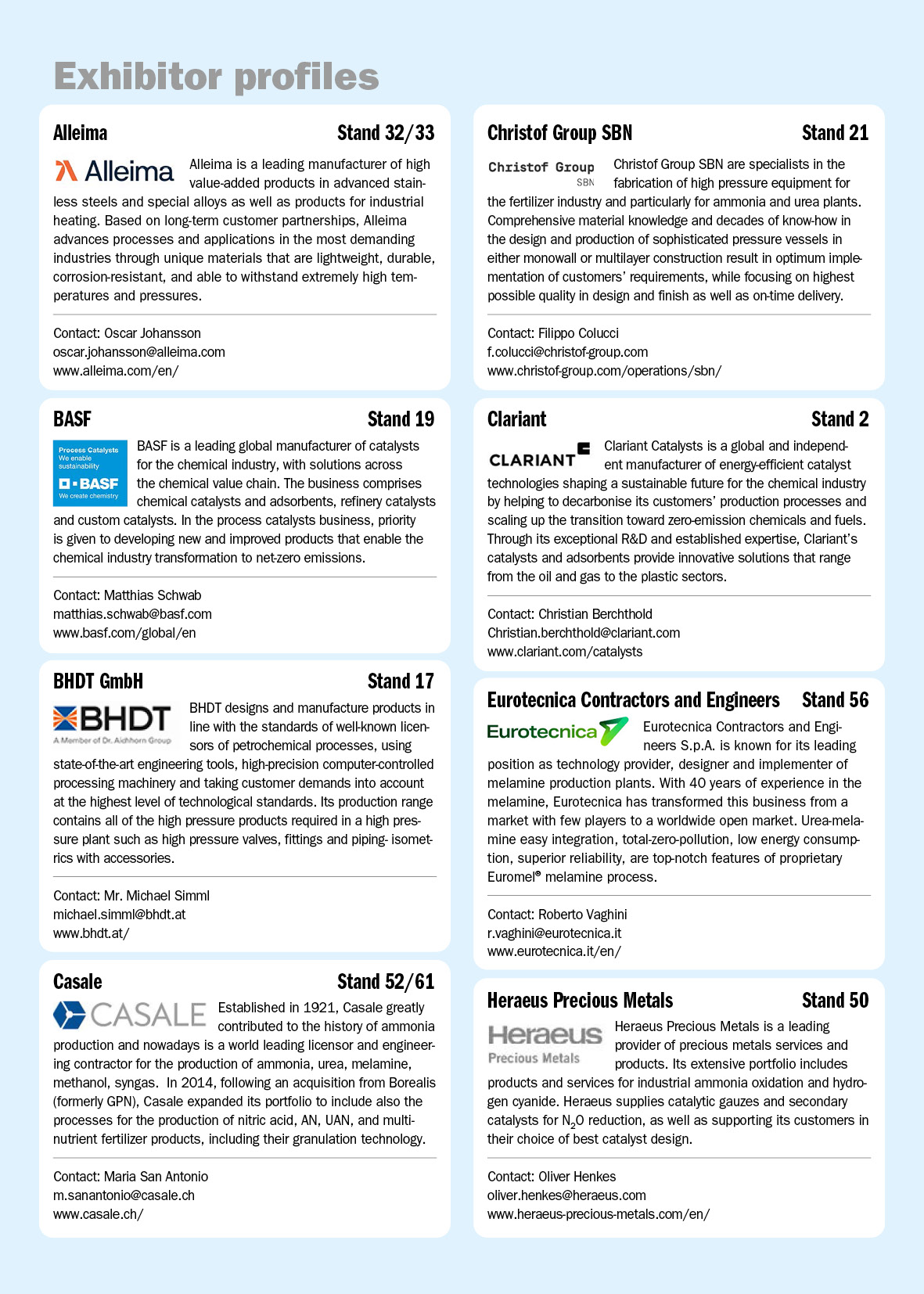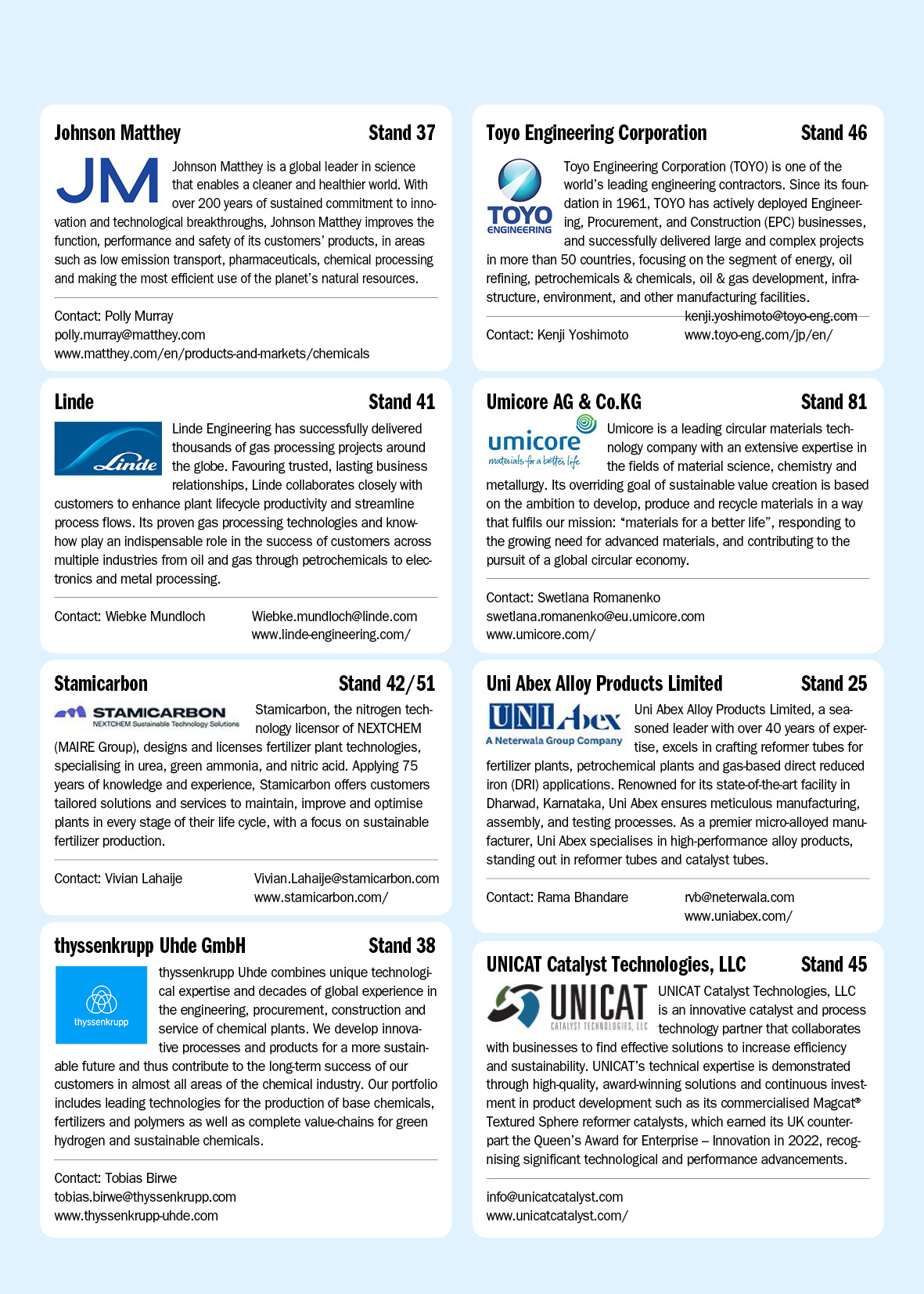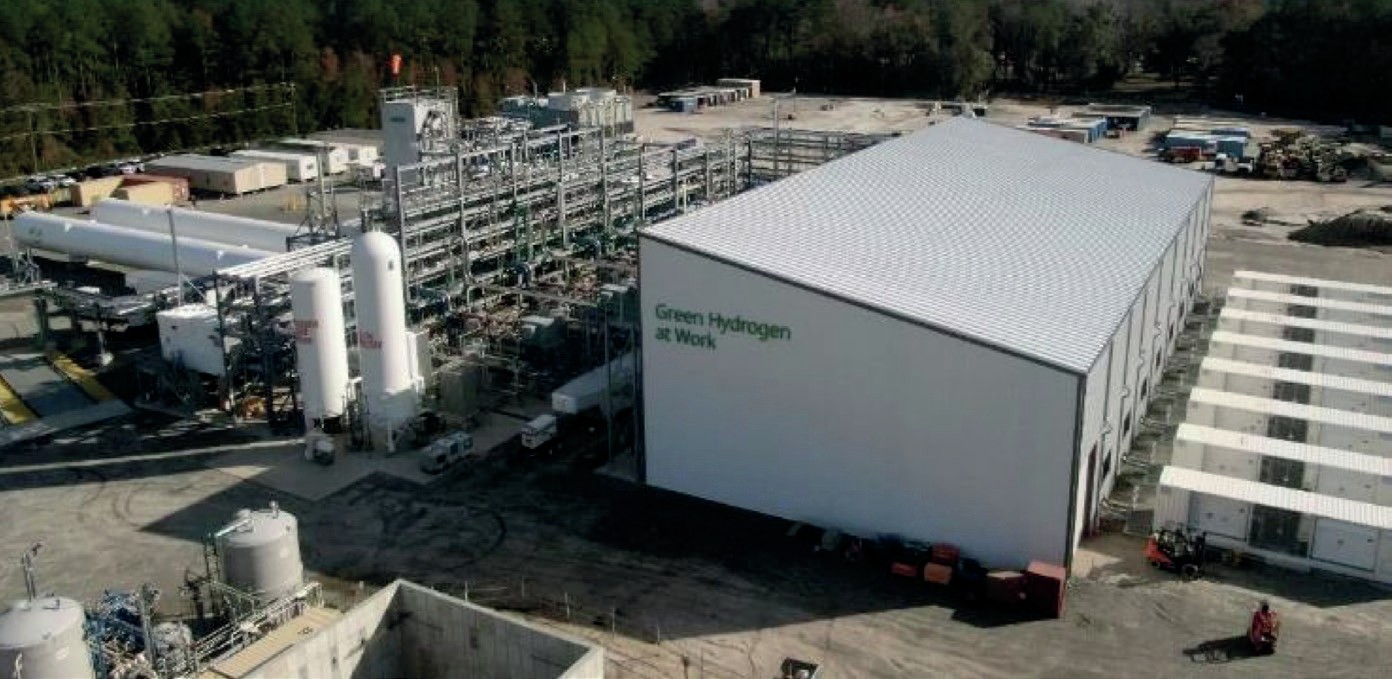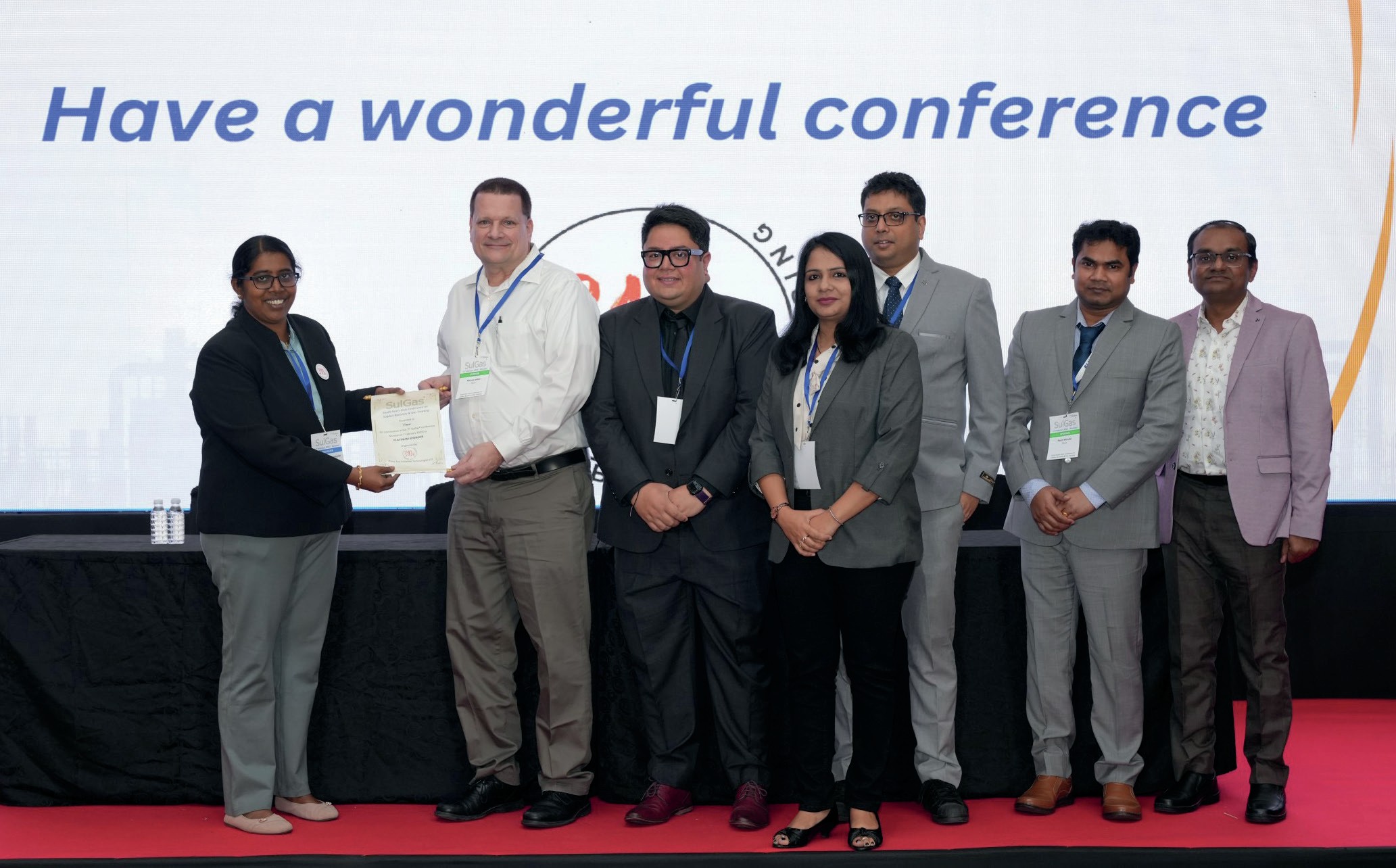Nitrogen+Syngas 393 Jan-Feb 2025

31 January 2025
Nitrogen+Syngas 2025 Expoconference

The Nitrogen+Syngas Expoconference 2025 returns this year to Barcelona, Spain, with an extensive programme covering the entire nitrogen and syngas value chain. This year there is a strong focus on energy efficiency, carbon capture and GHG emissions, as well as dedicated sessions on digitalisation and future fuels. In addition to the extensive technical programme, the 2025 agenda has been enriched with two new features: a full day of investment and commercial insights from global experts; and a 3-hour certified training programme dedicated to plant safety and reliability.
New for 2025
Certified operator training programme
This three-hour training programme will focus on the theme of hazard identification techniques for risks associated with green ammonia and urea, offering operators the opportunity to learn from real life case studies. Through in-depth presentations and interactive discussions, participants will be able to boost their professional development by exploring critical safety practices and operational insights.
Participants will receive a Certificate of Completion from the Fertilizer Academy, a globally recognised independent training platform dedicated to real-life industry experience, unbound by corporate interests or affiliations with EPC organisations and technology licensors.
Investment in infrastructure
A full day of investment and commercial presentations will take place on 10 February, designed to foster high-impact networking and knowledge-sharing for executives, fund managers, industry infrastructure investors, asset owners and operators, and government representatives. Supported by leading asset owners and industry infrastructure experts, the sessions will delve deep into pivotal topics for 2025 and beyond.
Alongside this, delegates will learn about trade flows, pricing trends, and the latest investment opportunities shaping the nitrogen and syngas landscape from CRU’s Head of Fertilizers, Chris Lawson and CRU’s Nitrogen & Hydrogen Analysis Lead, Charlie Stephen.
Setting the scene for this year’s conference Charlie Stephen comments:
“The European nitrogen and syngas industry remains precariously placed at the beginning of 2025. Natural gas prices remain elevated after steadily climbing through much of 2024 and are expected to be higher on average in 2025. The industry has been sheltered somewhat by high ammonia prices spurred by supply-side interruptions through the back-end of 2024. However, with supply looking healthy at the start of 2025 and the commissioning of new capacity and the re-start of Russian exports from the Black Sea scheduled for later in the year, prices look set to decline, swinging the pendulum to favour the import of ammonia over production and heightening the risk of curtailments and shutdowns.
2025 will be another challenging year, but producers will have their eye keenly on 2026. Commissioning of LNG capacity through the back-end of 2025 and through 2026 is expected to pressure gas prices. Additionally, the commencement of the definitive phase of the EU’s Carbon Border Adjustment Mechanism will see imports into the EU subject to equivalent carbon costs that European producers have been incurring for over a decade. Both factors are expected to escalate through to the end of the decade, bringing some structural improvements to European competitiveness.
Longer term, the future of the industry still remains highly uncertain in the face of decarbonisation policy. The latest revision of the Renewable Energy Directive (RED III), requiring 42% of hydrogen consumed to be in the form of a renewable fuel from non-biological origins by 2030, is unlikely to be achieved for nitrogen fertilizers given the current pipeline of low emission ammonia projects.
Given the scale of continuing competitive and policy pressures, the industry must continue to collaborate to pursue improvements in safety, reliability and efficiency while developing and investing in solutions for decarbonisation.”
